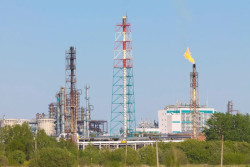Electrical Hazards
Working with electricity can be dangerous. Engineers, electricians, and other professionals work with electricity directly, including working on overhead lines, cable harnesses, and circuit assemblies. Others, such as office workers and sales people, work with electricity indirectly and may also be exposed to electrical hazards.
Electricity has long been recognized as a serious workplace hazard. OSHA's electrical standards are designed to protect employees exposed to dangers such as electric shock, electrocution, fires, and explosions. Electrical hazards are addressed in specific standards for the general industry, shipyard employment, and marine terminals.
Electrical Hazard Zones: Areas of the drilling rig are classified into "electrical hazard zones" based on the operative potential of release and accumulation of flammable gases. Electrical equipment used in these zones must conform to OSHA regulations.
Grounding and Bonding: All temporary, 120-volt, single-phase, 15- to 20-ampere flexible electrical cords and receptacles must conform to OSHA grounding and bonding requirements by having a ground-fault circuit interrupter system or an assured equipment grounding program.
Knowledge Check Choose the best answer for the question.
4-2. What are "electrical hazard zones" on drilling rigs based on?
You forgot to answer the question!

